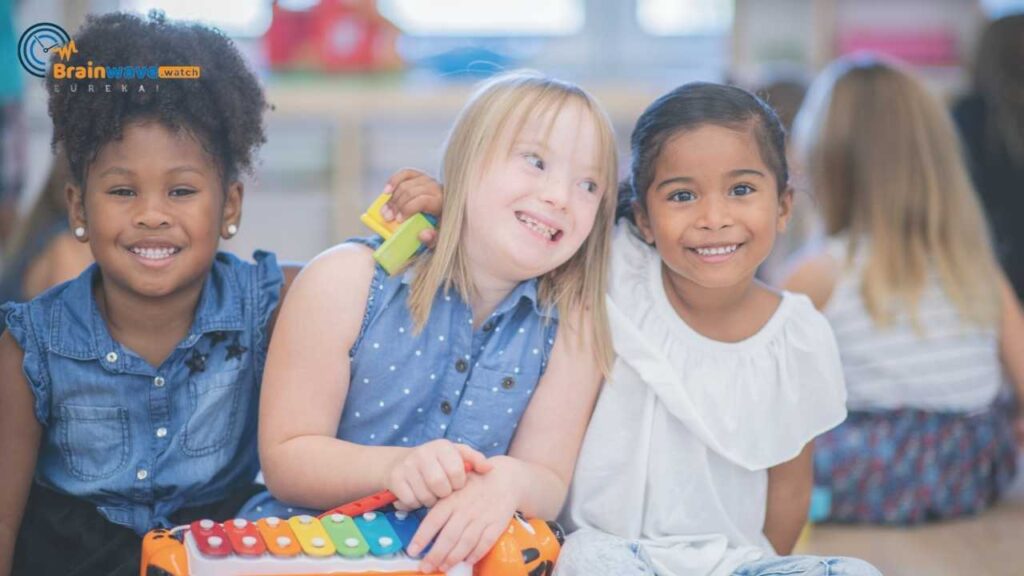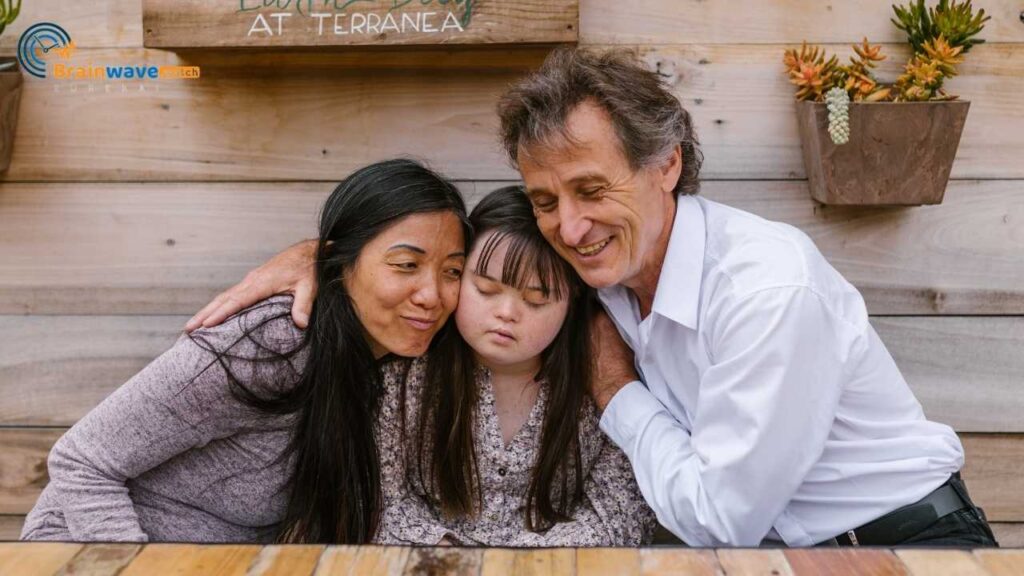Inclusion is a powerful concept that can transform the lives of children with disabilities. It refers to the practice of providing every child, regardless of their abilities or differences, with the opportunity to participate fully in all aspects of society, including education.
By promoting inclusion, we not only create a more equitable and diverse society, but we also unlock the potential of these children, allowing them to thrive and reach their full capabilities.
The Importance of Inclusion
Inclusion plays a vital role in the lives of children with disabilities. It fosters a sense of belonging and acceptance, which is crucial for their overall well-being and development. By creating an inclusive environment, we enable these children to develop social skills, build self-esteem, and form meaningful relationships with their peers.
Defining Inclusion in Education and Society
Inclusion, when applied to education, means ensuring that every child, regardless of their abilities, is welcomed and supported in the general education classroom alongside their typically developing peers. Inclusive education goes beyond physical placement; it embraces the principle of equal opportunity and full participation for all students, including those with disabilities.
In the broader context of society, inclusion means creating a society that values diversity, respects differences and provides equal opportunities for all individuals, irrespective of their abilities.
Benefits of Inclusion for Children with Disabilities
The benefits of inclusion for children with disabilities are vast and far-reaching. Here are some of the significant advantages that inclusion offers:
1. Enhanced Social Skills and Self-esteem
Being part of an inclusive classroom allows children with disabilities to interact and engage with their peers regularly. This social interaction provides them with opportunities to develop and practice crucial social skills, such as cooperation, empathy, and effective communication. As they form friendships and experience a sense of belonging, their self-esteem and confidence also flourish.
2. Academic and Cognitive Development
Inclusive education fosters academic growth and cognitive development for children with disabilities. When these students are included in general education classrooms, they have access to a curriculum that is challenging and designed to meet their individual needs. They are exposed to a wide range of learning opportunities, which not only stimulates their intellectual growth but also promotes critical thinking and problem-solving skills.
3. Improved Communication and Language Abilities
Being surrounded by their typically developing peers exposes children with disabilities to rich language models and communication opportunities. This inclusive environment encourages them to develop and enhance their communication and language abilities. Moreover, interaction with peers of varying abilities promotes the use of alternative communication methods, like sign language or augmentative and alternative communication (AAC) systems.
4. Increased Opportunities for Learning and Growth
Inclusive classrooms provide children with disabilities with a wide range of learning opportunities that cater to their strengths and needs. By participating in the same learning activities as their peers, they are exposed to diverse perspectives and experiences, which enhances their overall learning and growth. They also benefit from positive role modeling and have the chance to learn from their typically developing peers.
Read also: 10 Practices To Address Communication Barriers in the Classroom
Challenges and Barriers to Inclusion
While the benefits of inclusion are undeniable, several challenges and barriers hinder its implementation. These challenges include:
- Attitudinal Barriers and Misconceptions: Attitudes and preconceived ideas about disability can often pose significant barriers to inclusion. Misconceptions about the capabilities and potential of children with disabilities can lead to low expectations and limited opportunities. Addressing these attitudinal barriers is crucial in creating a more inclusive society.
- Lack of Resources and Support: Inclusion requires adequate resources and support systems to accommodate the diverse learning needs of children with disabilities. Unfortunately, many schools and educational institutions lack the necessary resources, such as assistive technology, specialized personnel, and individualized support plans, to fully include and support these children effectively.
- Inadequate Teacher Training and Awareness: Teachers play a central role in creating an inclusive classroom environment. However, many educators are not adequately trained or prepared to meet the diverse needs of their students. Lack of awareness and training in inclusive education strategies can hinder the successful implementation of inclusive practices.
- Physical and Environmental Barriers: Physical and environmental barriers, such as inaccessible infrastructure or limited mobility aids, can pose considerable challenges for children with disabilities. These barriers limit their access to educational and social opportunities and hinder their full participation in society. Overcoming these physical and environmental barriers is essential to promote inclusion effectively.
Read also: The Benefits of Assistive Technology for Children with Disabilities
Strategies for Promoting Inclusion
Addressing the challenges and barriers to inclusion requires a multifaceted approach. Here are some strategies that can promote inclusion in education and society:
- Fostering a Culture of Acceptance and Empathy: Creating a culture of acceptance and empathy is the foundation for promoting inclusion. It involves educating individuals about the value of diversity, challenging stereotypes and biases, and fostering an environment where everyone feels included and respected.
- Implementing Inclusive Education Policies and Practices: Policy changes at the institutional and governmental levels can significantly impact inclusion. Implementing inclusive education policies and practices ensures that schools provide appropriate accommodations, resources, and support systems to meet the diverse needs of all students.
- Providing Individualized Support and Accommodations: Each child with a disability has unique strengths and challenges. Providing individualized support and accommodations tailored to their needs ensures they have equal access to educational opportunities. This includes assistive technology, specialized instruction, and personalized education plans.
- Collaboration Between Teachers, Parents, and Support Professionals: A collaborative approach involving teachers, parents, and support professionals is vital for the successful implementation of inclusion. Regular communication and collaboration between these stakeholders ensure that the child’s needs are understood and supported both at school and at home.
Related Guide: Early Intervention for Children with Developmental Challenges
Success Stories and Case Studies
Real-life examples of inclusive education programs highlight the positive impact of inclusion on children with disabilities. These success stories demonstrate how inclusive environments have transformed lives and set children on a path toward a brighter future. Testimonials from parents, educators, and children with disabilities further emphasize the long-term benefits of inclusion.
Overcoming Common Misconceptions
Debunking myths about inclusion and children with disabilities is crucial in promoting the acceptance and understanding of inclusion. Addressing the concerns and fears of parents and educators helps alleviate anxieties and build a supportive and inclusive community. It is vital to recognize and highlight the potential of every child, regardless of their ability.
The Role of Advocacy and Policy
Advocacy and policy play a significant role in promoting and fostering inclusion. Advocacy organizations, such as [insert relevant organization names], work tirelessly to influence policies, laws, and regulations that support inclusive practices. Encouraging active participation and engagement in advocacy efforts ensures that the voices of children with disabilities and their families are heard and respected.
People also read this: Fostering Independence in Children with Disabilities
Conclusion
Inclusion has the power to unlock the potential of children with disabilities and create a society that celebrates and values diversity. By recognizing the importance of inclusive education and promoting inclusive policies and practices, we can create an environment where every child, regardless of their abilities, can thrive and reach their full potential. Let us prioritize inclusion and work together to create a world where every child has equal opportunities to learn, grow, and succeed.







